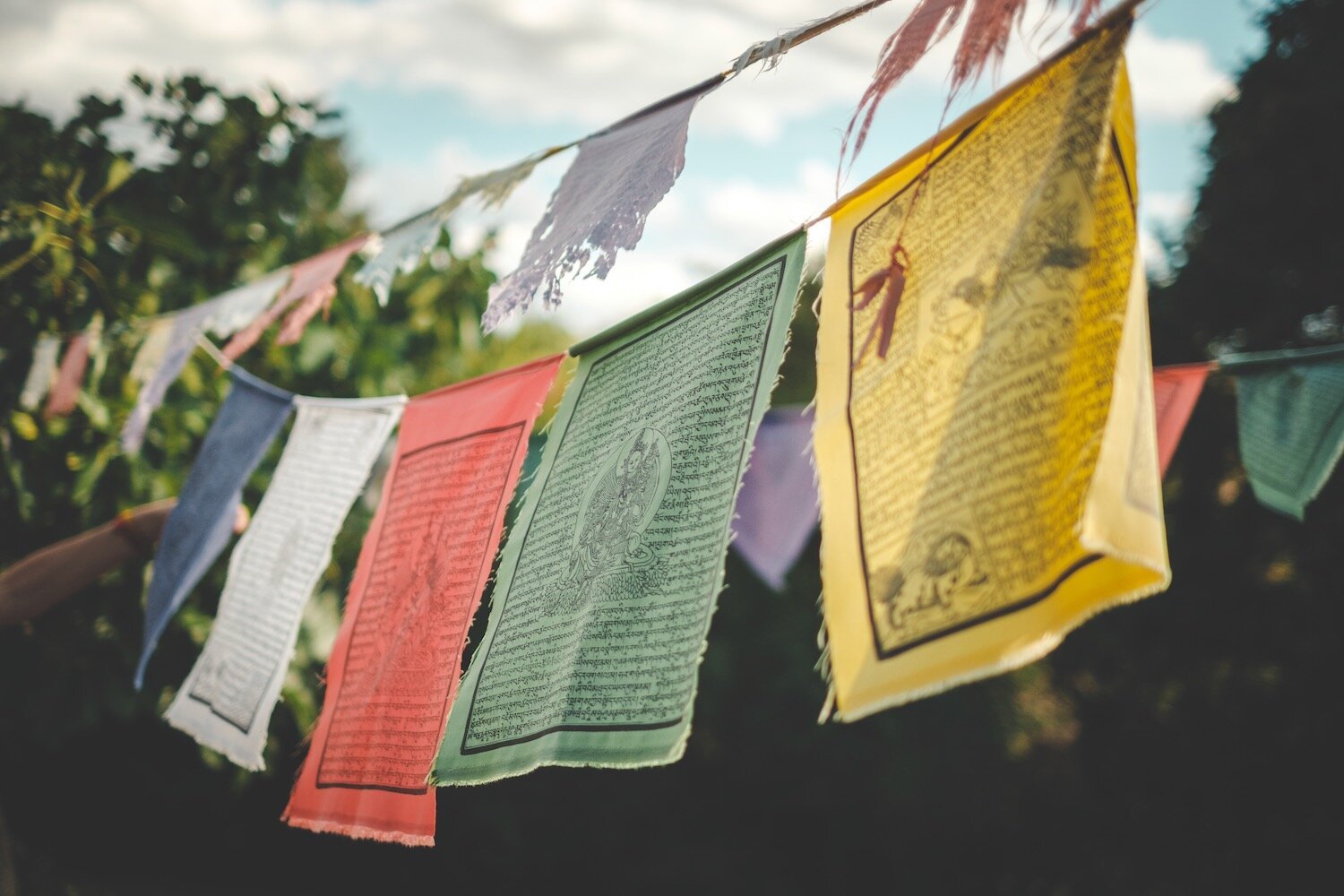Yin Yoga Teaching Programme
Please see below for our complete training programme which will take you from anatomy to philosophy.
Please do not hesitate to contact us if you need more information.

Module 1 - Anatomy & Functional Approach
Our anatomy module takes you into the functional approach of Yin Yoga
PRACTICE
Understanding the 7 archetypes
And explore the many variations of these archetypes
Learn transitions poses & variations to modulate the pace of your class.
To build your sequence according to your intention
Work on the regularity of breathing
Diaphragmatic breathing
TEACHING METHODOLOGY
Knowledge and understanding of the Yin Yoga approach
Learn the difference between a Yin "Passive" and a Yang "Dynamic" style of Yoga
How to communicate effectively the value of Yin Yoga
Stirah & Sukham / Function Vs Aesthetic
Acquire the skill of sequencing Yin Yoga
Design classes from an anatomical point of view
Learn the teaching methodology 7/10/14.
7 Archetypes - 10 Muscle Groups - 14 Skeletal Segments. Developed by Paul and Suzee Grilley, founders of Yin Yoga.
ANATOMY STUDY
Looking at the 14 skeletal segments of the body
Understanding skeletal variations
Introduction of the mandalas (schemas) Muscles and connective tissues (myo-fascial) of the thighs and torso
Our tools to define the functional approach to yoga. The 10 muscle groups
Study the main bone structures of the body
The spine and pelvis
Understanding tension and compression
The restrictions and stimuli of all asanas
Study of the benefits and qualities of Yin Yoga practice
Discovering the anatomical and physiological advantages and the positive impact of the practice on our body
Appreciate the role of the connective tissues in relation to Yoga practice
Fascia network and tensegrity / Ligaments, tendons...
PHILOSOPHY
Learning Prescription
Shravana, Manana, Nididhyasa or Yoga Citta Vritti Nirodha
Clarify and define the path of Yoga
As a psycho-spiritual system

Module 2 - Meridians, Traditional Chinese Medicine & Taoism
Our meridian module integrates the Fascia network with the energy system described in TCM.
PRACTICE
Practice the series of meridians related to the 5 elements
Using Yin Asanas & Chinese meridians approach to revitalize body/organs
Familiarise yourself with meridian tracing
Memorize the meridians location
Practice Qi Gong & Wuji standing meditation
Use of Shiatsu, Asana, Qi-Gong techniques to understand Qi & Meridians
Learn the Standing Meditation: Wuji & Zhàn zhuāng
The Taoist meditative approach, the relationship between Earth & Heaven
Enter the practice of Nei Jing Tu
Work on the lower Dantian, turning the small wheel
THEORY OF TRADITIONAL CHINESE MEDICINE
Approach the meridian system
The 12 main meridians & their relation to the organs
Look at the 5 Elements Theory
Generative & controlling cycles
Understanding the flow and formation of Qi
Qi movement & different type of Qi
Study Water-Wood-Earth-Fire-Metal elements
Relation & function of Zhang & Fu organs to each Element
Identifying the 3 treasures of Traditional Chinese Medicine
Jing/Physical, Qi/Energetic, Shen/Spiritual
Classical and modern history of TCM
Chronology of Chinese medicine through the dynasties and its impact on the West
ANATOMY STUDY
Methodology for learning upper body muscles
To identify the meridians of the upper body
Learn the fascia network and acupuncture meridians
The acupuncture channels of the East are the fascial plane of the West
Associate the 3 depths of the meridians with the different depths of the fascias.
The superficial meridian, the deep meridian and the parietal meridian.
TEACHING METHODOLOGY
Acquire the Skill of Sequencing Yin-Yoga
Design class from a meridian point of view
Study the 3 depths of the meridians
The dermal layer (Jing Mai), the myofascial layer (Jing Jin) and the visceral layer (Jing Bie)
PHILOSOPHY
Inquire into the Daoist Wisdom
Origin, Symbolism, Coexistence & the Qualities of the “Way”
Introduction to the Tao Te Ching
Reading and analysis of selected verses

Module 3 - Meditation & Philosophy
Our Meditation/Philosophy module aim at demystifying the spiritual approach of Yoga through analysis of perception & cognition.
PRACTICE
Cultivate and refine your ability to concentrate by applying and maintaining a single focus
Vitarka & Vichara or the fusion of Asanas, Pranayama and Dharana
Practice different meditation techniques to collect the mind
Diaphragmatic breathing, Alternate breathing, Mindfulness of breathing "Anapanasati"
Progress Towards an absorption of the mind
Developing Samatha or the practice of meditative quiescence
Chant the key Sutras and the Bija-Mantra Om
Allowing us to neutralise the Citta Vrttis "fluctuation of the mind".
TEACHING METHODOLOGY
The tattvas of the Yin practice
Principles and qualities of practice
Define Ekagrata or one-pointedness of mind
Leading your practice and teaching with one intent
Introduction to the Metta practice along with the study of the yoga sutras.
A practice aiming to foster a mental state of kindness, love, and compassion
Discover the fusion of Asana-Pranayama-dharana
Sequence your practice around the breath, from start to finish
PHILOSOPHY
Understanding M.Patañjali’s Raja Yoga
Yoga Citta Vritti Nirodha exposed - The definition of yoga
Study the Samkhya philosophy or the metaphysical structure of the Yoga Sutras
From Prakriti to Purusa or the ontology of consciousness
Study the 5 obstacles of meditation
And how to overcome them
Embodying the Brahma Viharas
The 4 Incommensurables expounded in the Yoga Sutras and Buddhism
Analysis and resumé of the 4 chapters of the Yoga Sutras
Samadhi Pada - Chapter on Meditative Absorption, Sadhana Pada - Chapter on Spiritual Practices, Vibhuti Pada - Chapter on the Powers of the Mind, Kaivalya Pada - Chapter on Absolute Freedom
Identify the 5 afflictions that link us to suffering.
The 5 Kleshas: Avidya, Ignorance - Asmita, Ego - Raga, Desire - Dvesa, Aversion - Abhinivesha, Desire for continuity (fear of dying).

Study Module
Our study module is an immersion in a classic text of Eastern philosophy accompanied by the practice of Yin Yoga.
YIN YOGA AND SVADHYAYA
The intentions of this module are to provide a space for introspection and study around the structure of an Eastern philosophy text.
Practice time will not be neglected, daily divided between meditation and Yin Yoga practice, with a period of noble silence

